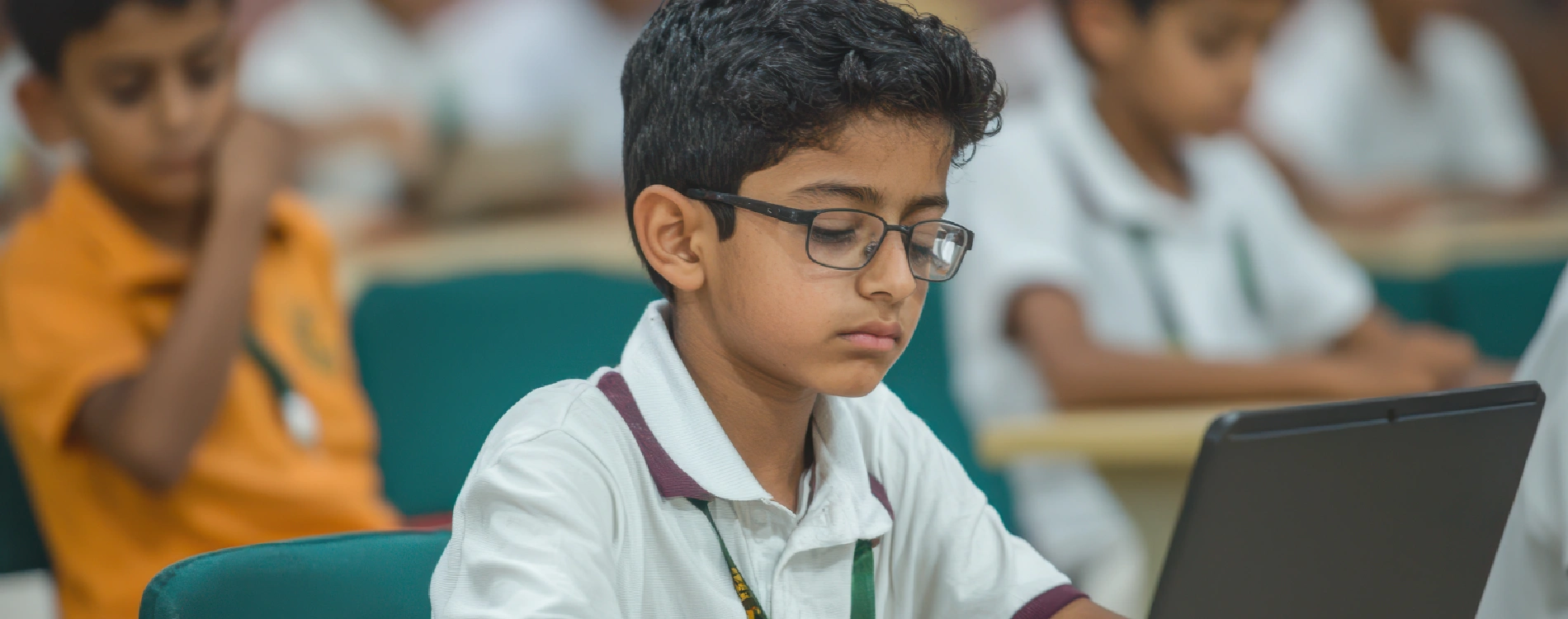Education is the foundation of a country’s progress, and with the emergence of digital technology, India is seeing a revolution in learning. But how does this transition occur? The Indian government has played an important role in ensuring that digital education reaches every part of the country. Learning has been more accessible than ever thanks to a variety of programs, platforms, and initiatives. Let’s look at how the government’s initiatives are changing the future of education in India.
What is Digital Education?
Digital education refers to the integration of technology-driven tools and platforms to enhance teaching and learning experiences. It surrounds various digital resources such as e-learning platforms, virtual classrooms, interactive applications, video lectures, and AI-powered education solutions. These technologies provide students and teachers with seamless access to high-quality learning materials, promoting a more dynamic and effective educational environment.
By using the power of the internet, cloud computing, and artificial intelligence (AI), digital education enables flexible, inclusive, and accessible learning opportunities that go beyond traditional classroom settings. It allows students to learn at their own pace, access global resources, and engage with interactive content that enhances comprehension and retention. Teachers, on the other hand, benefit from advanced analytics, automation tools, and AI-driven insights to personalize learning experiences for each student.

E-Education User Distribution in India
| Category | Users (Millions) | Percentage |
|---|---|---|
| L-12 Online Learners | 35 | 29% |
| Higher Education Enrollments | 25 | 21% |
| Skill-Based & Certification | 60 | 50% |
Importance Of Digital Education In India
India is home to over 1.4 billion people, with a large percentage residing in rural and semi-urban areas. Due to infrastructure challenges, limited access to qualified teachers, and economic disparities, digital education in India has become a necessity to bridge the education gap. Below are the key reasons as to why it is essential:
Bridging The Educational Divide
Traditional classrooms often fail to reach remote villages. Digital education in India removes these geographical barriers by offering online courses and study materials accessible from anywhere.
Enhancing Skill Development
The rise of digital technologies has created a demand for professionals skilled in coding, artificial intelligence, data analytics, and other emerging fields. Digital platforms provide affordable skill-development programs.
Affordable And Scalable Education
Traditional education requires physical infrastructure, textbooks, and trained faculty. In difference, e-education in digital India enables mass learning at a significantly lower cost, reducing financial strain on students.
Interactive And Engaging Learning Methods
Gamification, virtual reality (VR), augmented reality (AR), and AI-driven personalized learning make education more engaging, increasing student retention and understanding.
Supporting Government Initiatives
Digital education in India aligns with the Digital India mission, ensuring educational equity by making resources available across diverse socio-economic backgrounds.
Digital Education Statistics in India
| Sr. No | Category | Statistics | Source |
|---|---|---|---|
| 1 | Total Schools in India | 14.72 lakh (1.472 million) | PIB |
| 2 | Total Students | 24.8 crore (248 million) | PIB |
| 3 | Total Teachers | 98 lakh (9.8 million) | PIB |
| 4 | Schools with Computers | 57.2% (up from 38.5% in 2019-20) | PIB |
| 5 | Schools with Internet | 53.9% (up from 22.3% in 2019-20) | PIB |
| 6 | Urban Households with Internet | 42% | NSO |
| 7 | Rural Households with Internet | 15% | NSO |
| 8 | Internet Access by State | Delhi - 55%, Kerala & Himachal Pradesh - 50%+, Odisha - 10% | Officers Pulse |
| 9 | Digital Initiatives | SWAYAM - Free online courses, DIKSHA - 7,080+ digital textbooks in 101 Indian & 7 foreign languages | Govt. Sources |
| 10 | Challenges | Rural-urban digital divide, lack of internet in schools, limited access to devices | Various Studies |
Aim And Goals Of Digital Education In India
The Digital Education initiative in India, under the broader framework of Digital India, aims to create an inclusive, technology-driven learning ecosystem that empowers students nationwide. The primary objectives include:
Universal Access to Education
Ensuring that students from all demographics, including rural and remote areas, have access to high-quality digital learning resources.
Encouraging Self-Learning
Promoting the use of MOOCs (Massive Open Online Courses) and e-learning platforms to cultivate independent learning habits, fostering a culture of continuous education and skill development.
Reducing Urban-Rural Education Gap
Expanding digital infrastructure and connectivity to ensure equitable learning opportunities for students in underserved regions.
Skill Enhancement for Employment
Aligning educational courses with industry requirements by offering specialized training in fields like artificial intelligence (AI), machine learning (ML), blockchain, and cloud computing to enhance employability.
Integration of Advanced Technology in Education
Using advanced technologies such as AI, Virtual Reality (VR), and Augmented Reality (AR) to create immersive learning experiences and improve understanding.
Key Government Initiatives For Digital Education In India
The Government of India has launched multiple initiatives under the Digital India umbrella to promote e-education in Digital India. Here are some of the most prominent programs:
01.
Diksha
-Interactive e-learning materials in multiple languages.
-Digital textbooks, lesson plans, and assessments for students and teachers.
02.
E-Pathshala
Developed by NCERT, this platform offers:
-Digital textbooks, audiobooks, and videos across multiple languages.
-Accessibility in offline mode, ensuring learning without internet dependency.
03.
Vidyadaan
-Encourages educators, experts, and institutions to contribute digital content.
-Strengthens the repository of free learning materials on DIKSHA.
04.
PM Evidya
Launched under the Atmanirbhar Bharat Abhiyan this initiative integrates digital learning resources. It includes:
-DIKSHA: A digital platform for students and teachers offering interactive e-content.
-SWAYAM Prabha: 34 DTH channels providing free educational content 24×7.
-e-Pathshala: A storage of digital textbooks and audiobooks.
-One Nation, One Digital Platform: Ensuring equal access to learning resources.
05.
Swayam And Swayam Prabha
-SWAYAM: An online learning platform providing UGC, AICTE, and NPTEL-approved courses.
-SWAYAM Prabha: 34 dedicated TV channels broadcasting free educational content, benefiting students with limited internet access.
Challenges In Implementing Digital Education In India
Despite significant advancements in digital education under the Digital India initiative, several challenges prevent its widespread adoption and effectiveness.
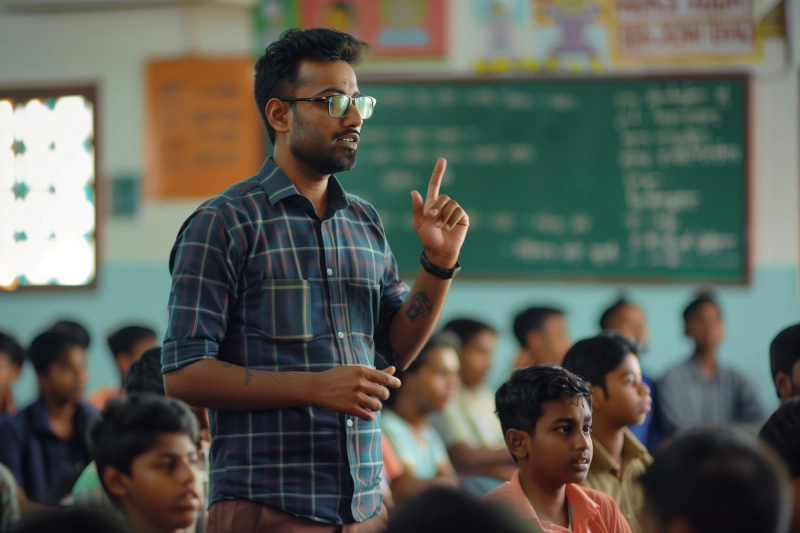
Teacher Training & Adaptability
The transition from traditional teaching methods to digital platforms requires teachers to be technologically adept. However, many educators struggle with adapting to new tools and lack proper training in online teaching techniques, affecting the overall quality of digital education.
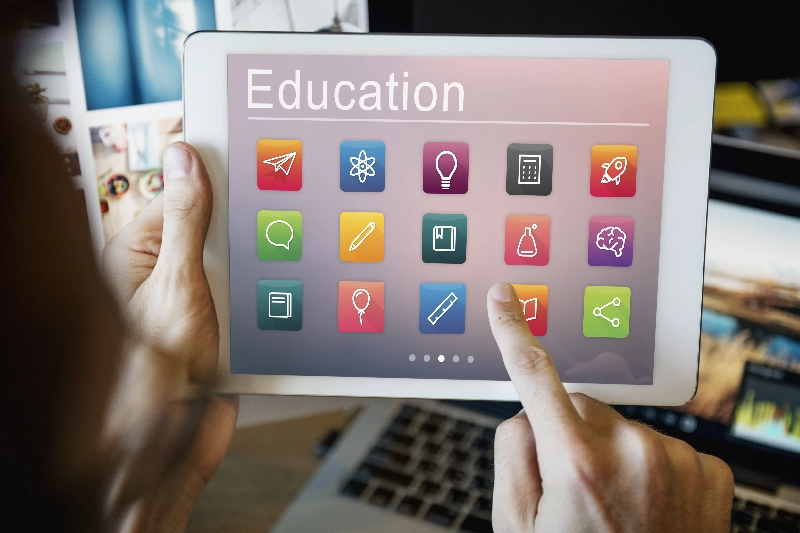
Quality Control Of Educational Content
The availability of standardized, high-quality digital learning materials remains a challenge. Inconsistent or poorly designed content can lead to confusion and a lack of proper knowledge dissemination, making it difficult to maintain uniform educational standards.
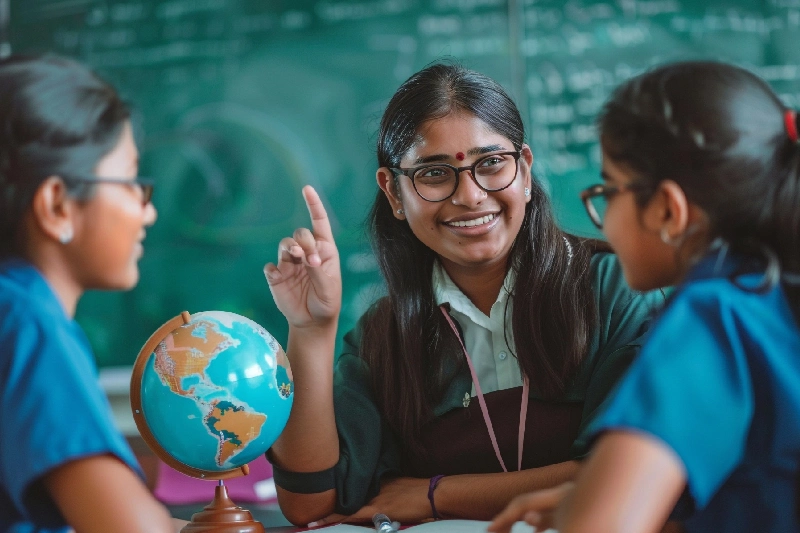
Student Engagement & Self-Discipline
Unlike traditional classrooms, digital learning demands a high level of self-motivation and discipline. Many students struggle with staying engaged in online classes, leading to decreased learning outcomes. Distractions at home and lack of peer interaction further impact their ability to focus.

Digital Divide
A major barrier in digital education is the difference in access to technology. Many rural and economically weaker sections of society lack reliable internet connectivity and digital devices such as smartphones, tablets, or computers. This limits students’ ability to participate in online learning, expanding the gap between urban and rural education.
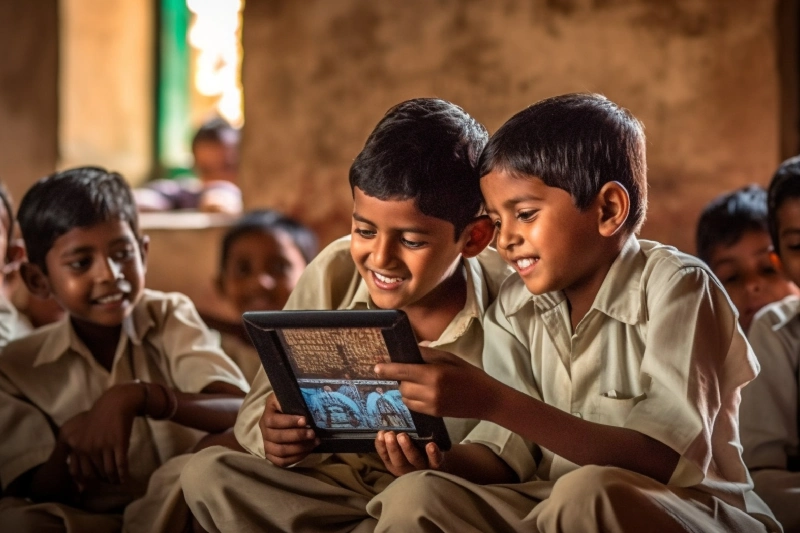
Limited Digital Infrastructure
Many schools, especially in underprivileged areas, lack the necessary infrastructure, including computers, smart classrooms, and digital learning resources. Without proper facilities, students cannot benefit from modern learning methodologies, making digital education ineffective for a large section of the population.
Future Of Digital Education In India
The future of digital education in India depends on a strong collaboration between the government and private sector to make learning more accessible, efficient, and engaging. Several key areas need to be addressed to ensure its success.
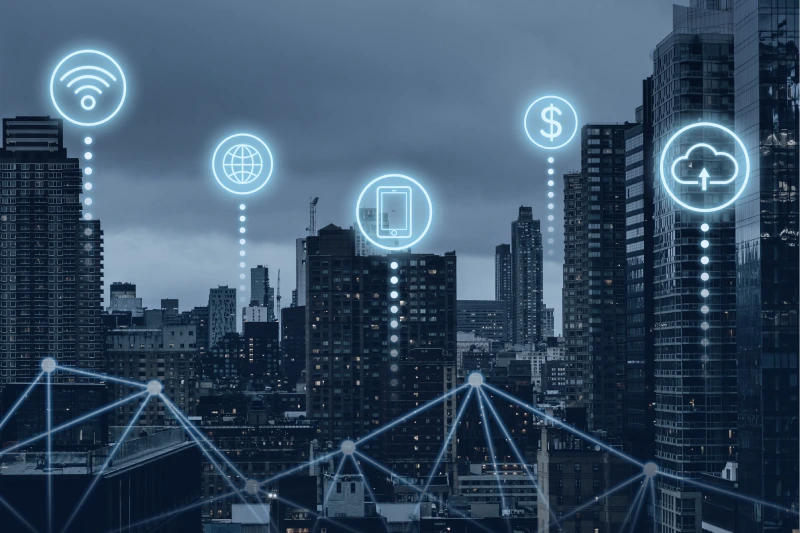
Strengthening Digital Infrastructure
Expanding high-speed internet connectivity to remote areas and ensuring affordable access to digital devices is crucial. The government must invest in broadband expansion projects and subsidized device distribution programs to bridge the digital divide.
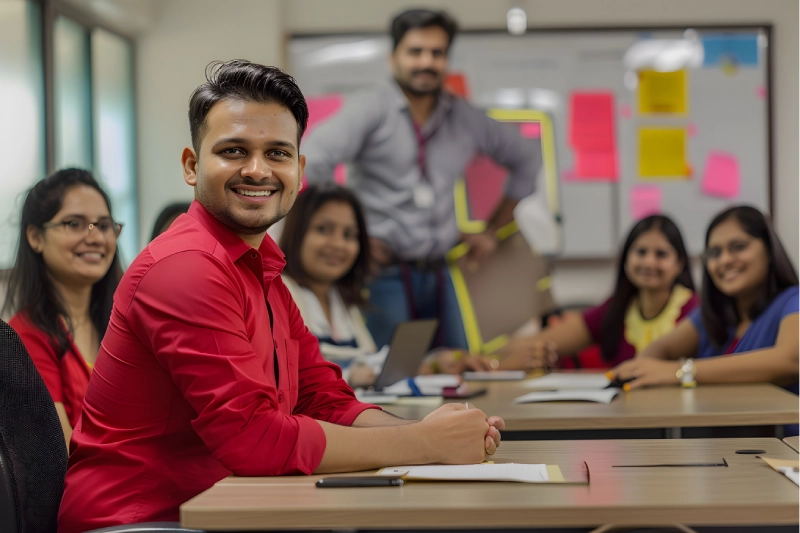
Enhancing Teacher Training Programs
Teachers must be equipped with digital teaching skills to effectively engage students. Regular training workshops on digital teaching, interactive learning tools, and AI-based teaching techniques can help educators adapt to modern education trends.
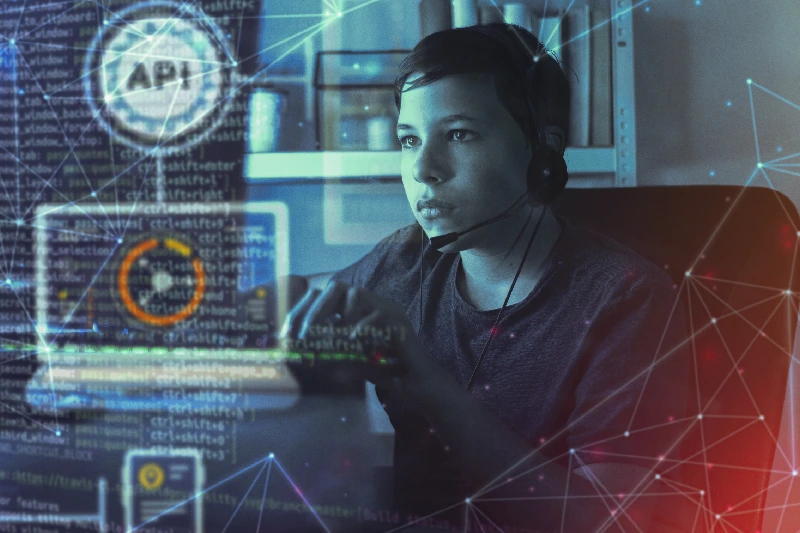
Improving Content Quality & Standardization
Developing high-quality, curriculum-aligned digital content is essential. AI-driven and interactive e-learning modules can make education more engaging and personalized. Standardized digital materials will ensure consistency in learning across different regions.

Encouraging Public-Private Partnerships (PPPS)
Collaborating with EdTech companies can bring innovation to digital learning tools, enabling schools to adopt advanced technologies such as virtual labs, gamified lessons, and adaptive learning platforms.

Adopting A Hybrid Learning Model
A blend of traditional classroom teaching with digital education will provide students with the best of both worlds. This approach will enhance accessibility, flexibility, and effectiveness, aligning with the Digital India vision for the future of education.
Conclusion:
The Indian government has played a crucial role in promoting digital education in India through initiatives like PM eVIDYA, DIKSHA, SWAYAM, and e-Pathshala. These programs have made e-education Digital India more accessible, engaging, and affordable. However, challenges such as the digital divide, inadequate infrastructure, and teacher training gaps must be addressed to unlock the full potential of digital learning.
By enhancing internet connectivity, investing in digital tools, and fostering public-private collaborations, India can ensure that digital education reaches every student, empowering them with the skills needed for a tech-driven future.
Aas Vidyalaya: Transforming Education Through Digital Learning
AAS Vidyalaya is a revolutionary initiative in the field of digital education in India, Changeing the way students access and experience learning. Aligned with the Digital India mission, AAS Vidyalaya is revolutionizing e-education by offering an innovative and inclusive approach to schooling.
As India’s first comprehensive online school, AAS Vidyalaya aims to bridge the educational gap for students who may not have access to traditional schooling due to geographical, financial, or personal constraints. By leveraging the power of technology, the platform ensures that education is within reach for every student, regardless of their circumstances.
A New Era In Education
Education is a fundamental right, but millions of children across India still struggle to gain access to quality schooling. AAS Vidyalaya addresses this challenge by providing an all-encompassing digital learning environment that functions just like a traditional school. It brings structured, curriculum-based learning to students right at their fingertips, making it possible for them to continue their education seamlessly. Whether they reside in remote villages, urban slums, or are unable to attend school due to personal reasons, AAS Vidyalaya empowers students to pursue their academic aspirations without limitations.
AAS Vidyalaya’s Services And Features
AAS Vidyalaya stands out as an innovative e-learning solution by offering a structured and engaging educational experience. Here’s what sets it apart:
01.
Complete Schooling Online
AAS Vidyalaya offers a full-fledged curriculum for students from classes 6 to 10, covering all major subjects as per recognized educational boards. Students can follow a well-defined academic structure, ensuring that they receive a high-quality education similar to traditional schools.
02.
Live And Recorded Classes
Understanding the diverse needs of students, AAS Vidyalaya provides both live and recorded classes. This flexibility allows students to attend interactive live sessions or learn at their convenience by accessing recorded lessons, ensuring that they never miss out on crucial topics.
03.
Affordable & Inclusive Education
AAS Vidyalaya ensures that high-quality education is accessible to all students, irrespective of their socio-economic background. With affordable subscription plans and flexible learning options, it provides an inclusive learning environment that serves to the needs of students from diverse backgrounds.
04.
Certified Teachers & Personalized Guidance
AAS Vidyalaya employs highly qualified and experienced educators who provide continuous support to students. The teachers not only conduct lessons but also offer personalized mentoring, helping students understand complex topics and excel academically.
05.
Interactive & Engaging Learning Experience
To make learning more effective and engaging, AAS Vidyalaya integrates interactive elements such as quizzes, assessments, and doubt-solving sessions. These features encourage active participation and help students assess their progress regularly, making education a more enjoyable experience.
Empowering The Future Of Education
AAS Vidyalaya is not just an online school; it is a movement towards a more inclusive and digitally empowered education system. By eliminating barriers to learning, the platform aligns perfectly with India’s vision of a digitally inclusive society. It empowers students with the knowledge and skills they need to succeed in a rapidly evolving world.
For parents and students looking for a flexible, high-quality, and affordable education solution, AAS Vidyalaya is the perfect choice. Visit AAS Vidyalaya today and take the first step towards a brighter future with digital education.
Contact Us
Give your child access to quality e-education anytime, anywhere! Be a part of the Digital India education revolution with AAS Vidyalaya. Call us at 1234568879 or email test@gmail.com today!

